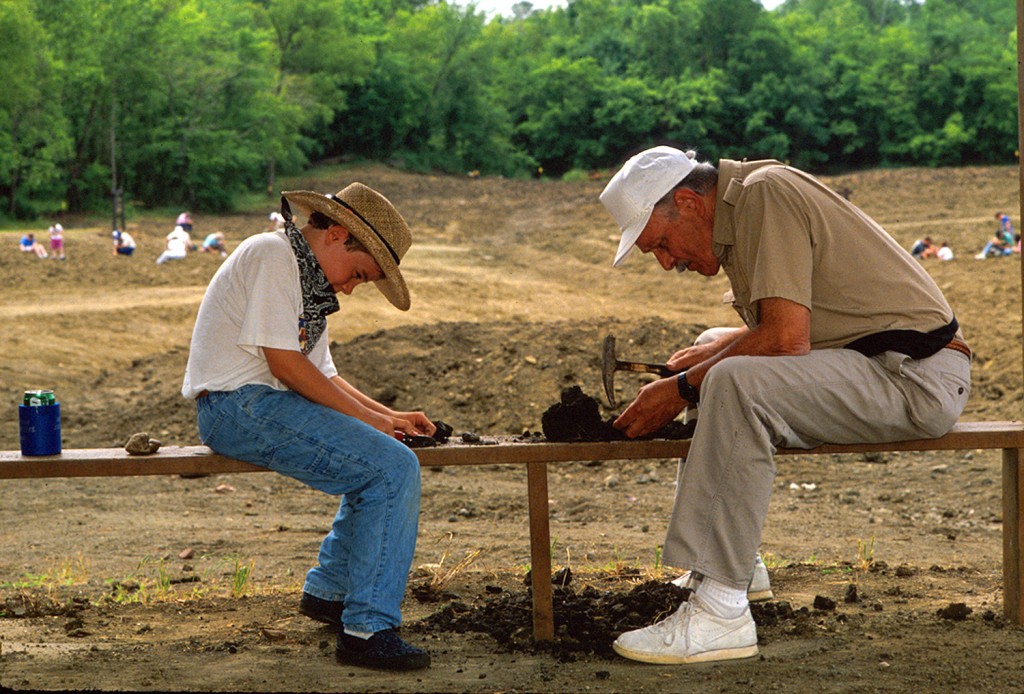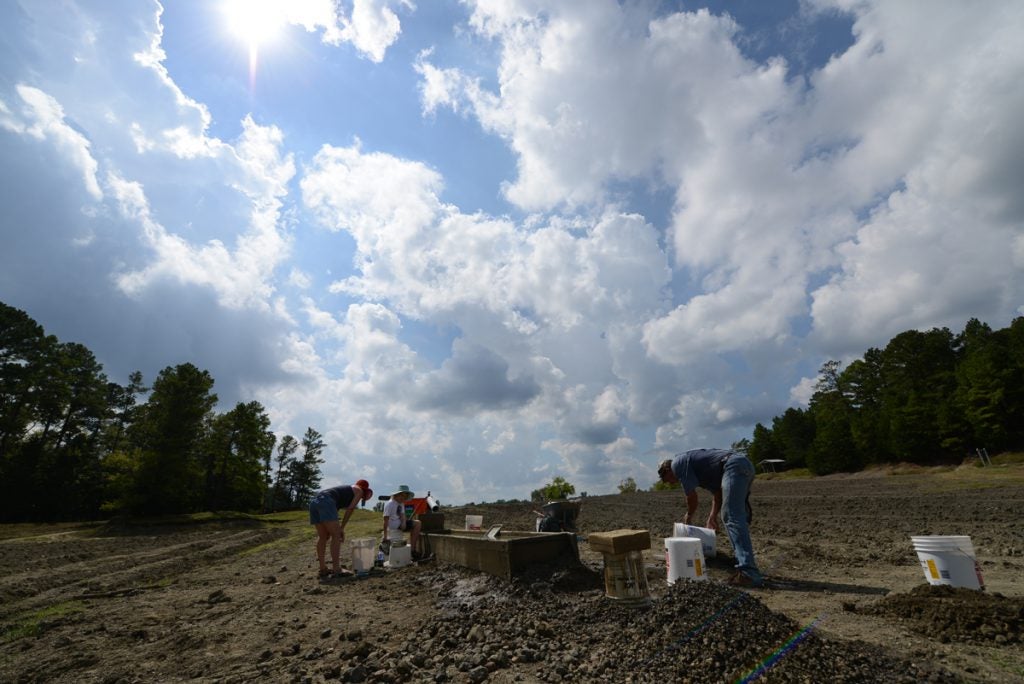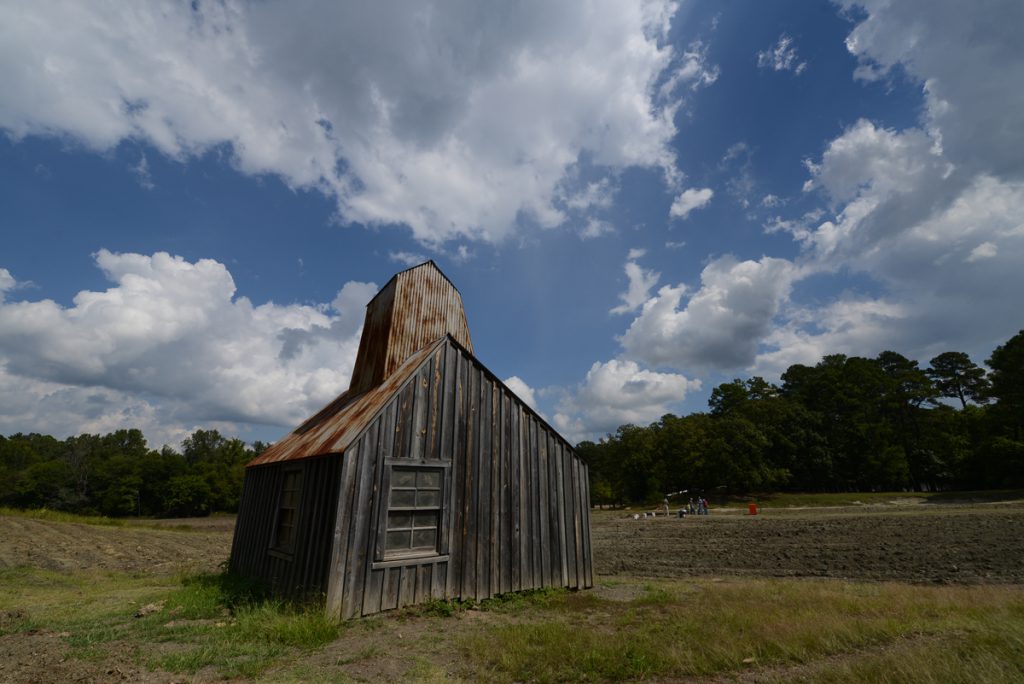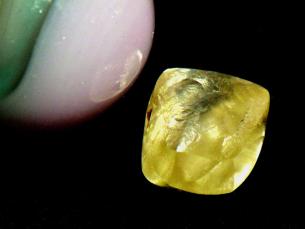Surprising Uses for Minerals Found at the Crater of Diamonds
By: Waymon CoxGreetings from Crater of Diamonds State Park! Minerals influence our lives in many ways that aren’t always obvious. Everything from cars to clean tap water exists because of our ability to extract and use minerals from the earth. Properties such as hardness, density, color, and luster help us to identify minerals. Some traits may indicate how certain minerals can be used, but their purposes are often more varied and significant than we realize.

Dozens of minerals can be found at Crater of Diamonds State Park, including calcite, mica, and barite. Each one can be used in different ways to make our lives easier.
Calcite, also known as calcium carbonate, is fairly common to find at the Crater. Here, it appears as a small, cloudy white crystal, shaped like a rhombohedron. It has a somewhat glassy shine and is about the same hardness as a fingernail.
Most calcite—in the form of limestone—is crushed, heated, and mixed with water and other materials as a hardening agent in cement. Because calcite dissolves easily in acid, it is also used to neutralize the acidity of water and soil.
On a more personal level, many of us have ingested calcium carbonate as a calcium supplement or an antacid. Calcium is also used as a mild abrasive in some brands of toothpaste; the next time you brush, check the back of your toothpaste tube for this interesting ingredient.
Another mineral that many visitors find at the Crater is called phlogopite mica. Phlogopite is a lightweight mineral that usually appears as a tiny, golden-colored flake in the search area. It features a somewhat metallic luster and looks a lot like glitter.
Despite its often dainty, lustrous appearance, phlogopite is an excellent insulator that is used to protect power cables for high-temperature industrial heaters, blast furnaces, boilers, and kilns. It is also used in the automotive industry to prevent overheating and reduce vibrations in brake pads, clutch plates, and many structural components of automobiles.

Phlogopite also insulates the walls of many concrete block buildings, including those found at the Crater of Diamonds. In home construction, it is used as attic insulation and a filler and surfacing agent in drywall joint compound. Chances are your home or workplace has phlogopite in the walls or ceiling.
Barite, or barium sulfate, is perhaps one of the most interesting minerals found at the Crater. Here, it usually appears as a small, light blue or gray crystal with a tabular shape. It is similar to calcite in hardness but is almost twice as heavy for its size.

The density of barite makes it useful as one of the primary ingredients in drilling mud, a thick, high-density fluid used in drilling rigs. It keeps drill bits cool as they dig into the earth for oil and gas wells, and it carries drill cuttings away from the bit. The thick mud also helps to prevent other liquids from flowing up into the hollow bits during the drilling process.
Anyone who has ever played a card game may have appreciated the heft of barite without realizing it. Powdered barite is sometimes used as a weighting agent in playing cards, allowing them to be easily dealt around a table.
Another interesting property of barite is its ability to block x-rays. Before undergoing a gastrointestinal CT scan, patients are often asked to drink a liquid suspension of barium sulfate. The liquid coats the inside walls of the esophagus and stomach to help doctors examine damaged or diseased areas and reach a diagnosis. If you have ever gulped this thick, chalky beverage, you have ingested barite.
Although most of these minerals are found in smaller quantities at the Crater of Diamonds, they serve as a reminder that minerals may be far more useful than we realize.


